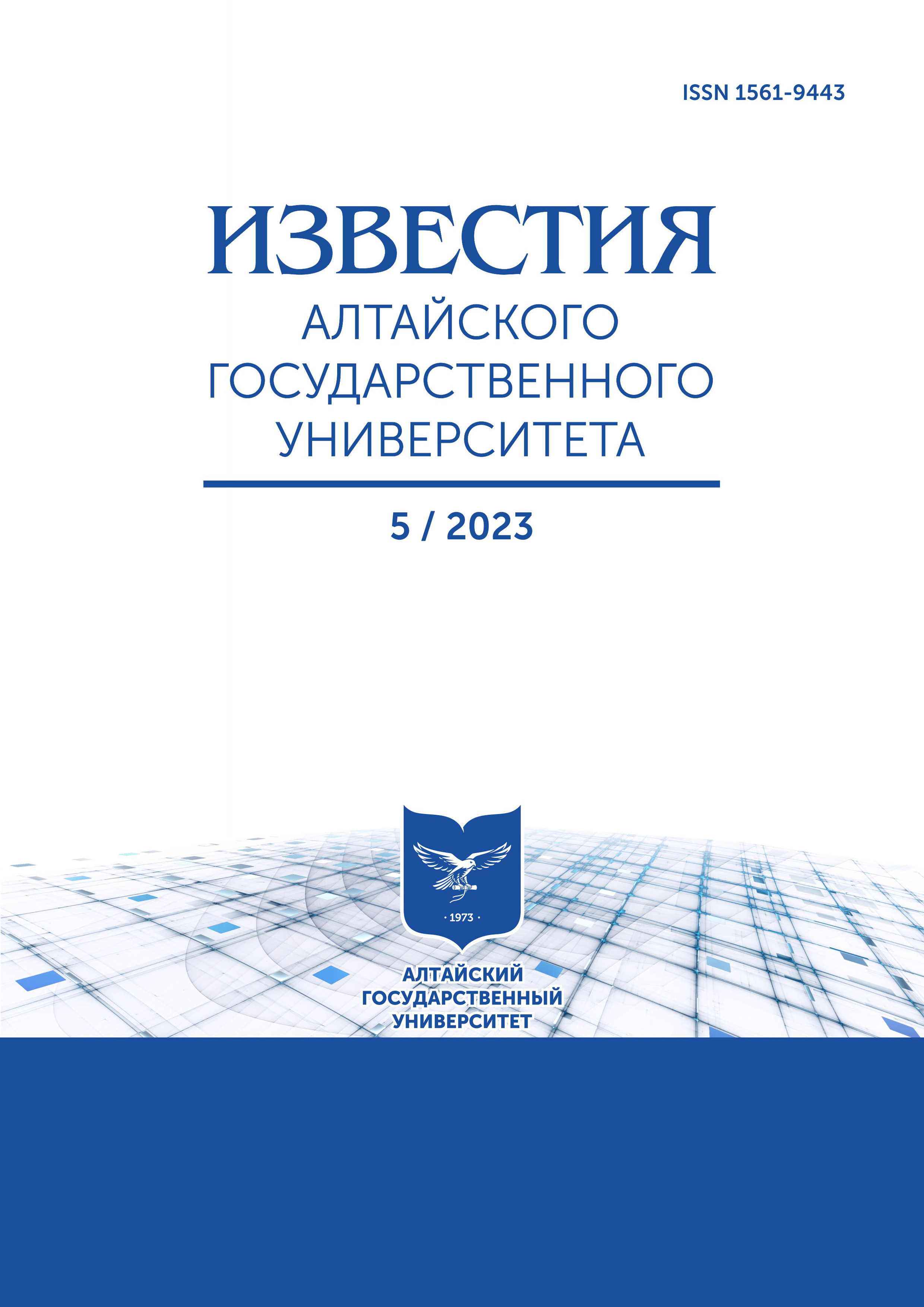War in Mali: Destruction of Timbuktu Monuments
ББК 63.3(6Мал)-68 УДК 94(662.1)
Abstract
The historical and cultural heritage of the region contains a powerful potential for its preservation and development. The more vividly colored the cultural specificity of the region, more precisely, the cultural peculiarity (and isolation) of the people living in the territory of this region, the greater the historical depth of the cultural tradition that determines the specifics of the population of the region, the more stable the local subculture (in this context, the totality of people having common features of culture and corresponding identity), the more cohesive, more stable the social group.
The destruction of the historical cultural heritage, the discrediting of culture, the destruction of the cultural symbols of a particular social community inevitably entails the blurring of its boundaries, the destruction of stable social ties, and the loss of collectively shared values. During the armed confrontation between government troops and jihadist gangs in the Republic of Mali, jihadists captured the ancient cultural capital of the Sahel, the city of Timbuktu.
Islamists destroyed ancient mosques and mausoleums, burned ancient manuscripts and libraries in which they were stored. It was an attempt to prevent the formation of a single national community and to prevent the creation of a multicultural nation-state.
Downloads
Metrics
References
Renan E. Quest-ce qu’une nation? Paris, 1882.
Филиппов В.Р. Советская теория этноса. Историографический очерк. М., 2010.
Anderson B. L'imaginaire national. Reflexions sur l'origine et l'essor du nationalism. Paris, 2002.
Филиппов В.Р., Дикко Э.Т. Мали на пути к национальному единству // Культурная сложность современных наций / отв. ред. В.А. Тишков, Е.И. Филиппова; Институт этнологии и антропологии им. Н.Н. Миклухо-Маклая РАН. М., 2016.
Boza A. La destruction des mausolees de Tombouctou au Mali // Lumni. URL: https://enseignants.lumni.fr/fiche-media/00000001526/la-destruction-des-mausolees-de-tombouctou-au-mali.html (accessed: 22.03.2023).
Fournier L. Les mausolees de Tombouctou: constructions et deconstruction // Radio France. URL: https:// www.radiofrance.fr/franceculture/les-mausolees-de-tombouctou-constructions-et-deconstruction-8486489 (accessed: 22.03.2023).
A propos de Tombouctou // UNESCO. URL: https:// whc.unesco.org/fr/canopee/tombouctou/#:~:text=En%20 2012%2C%20plusieurs%20b%C3%A2timents%20de,qui%20 a%20%C3%A9t%C3%A9%20compl%C3%A8tement%20 d%C3%A9moli (accessed: 22.03.2023).
Варвары XXI века: как уничтожают памятники истории и культуры // ТАСС. URL: https://tass.ru/ kultura/1802056 (дата обращения: 22.03.2023).
Al Mahdi Case. The Prosecutor v. Ahmad Al Faqi Al Mahdi // International Criminal Court. Office of the Prosecutor. URL: https://www.icc-cpi.int/mali/al-mahdi (accessed: 22.03.2023).
UNESCO Reconstruction et restauration des mausolees de Tombouctou // UNESCO. URL: https://whc. unesco.org/fr/canopee/tombouctou/ (accessed: 22.03.2023).
Elondou L.A., Guesdon M. G., Joffroy T., Keita B., Diallo S., Stehl D., Rashti C. Mission conjointe en vue de levaluation du patrimoine culturel malien et des manuscrits anciens. Bamako et Tombouctou, 28 mai — 8 juin 2013. Paris ; Bamako, 2013.
Atelier d’Architecture Aldi. Releves architecturaux. Etat des lieux des mausolees detruits a Tombouctou. Rehabilitation. Bamako, 2013.
Ghetti А. Etude sur les mausolees. Paris, 2014.
Thierry J., Essayouti B. Lessons Learnt from the Reconstruction of the Destroyed Mausoleums of Timbuktu,
Mali // HERITAGE2020 (3DPast | RISK-Terra). International Conference, Sep 2020. Valencia, 2020.
Debut des travaux de reconstruction des mausolees de Tombouctou (Mali) inscrits sur la Liste du patrimoine mondial // UNESCO. URL: https://whc.unesco.org/fr/actualites/1112.
Bertagnin M., Sidi О^. Manuel pour la conservation de Tombouctou. Paris, 2014.
Joffroy T. et Al. Rapport. Etude de la construction a Tombouctou. Region Rhone-Alpes, Regionde Tombouctou, DNPC, CRAterre, 2016.
Sidi О.A. Les travaux saisonniers de reparations des mosquees de Tombouctou. Tombouctou, 1995.
Kone M. et Al. Guide dentretien des mausolees reconstruits et rehabilites de Tombouctou. Paris, 2016.
Elondou L., Cisse L. Reconstruction des mausolees de Tombouctou: le role des communautes locales // Patrimoine mundial: reconstruction et recouvrement, 2018.
Alhadje O.S. Etude historique sur les 16 mausolees du patrimoine mondial de Tombouctou et sur les mausolees non classes ayant une importance majeure. Place, 2014.
Traore Н. Le bien culturel de Tombouctou, une patrimonialisation discutee ? Conditions locales de reception de la notion de patrimoine de type UNESCO // Dossier: Patrimonialiser au Maghreb. 2018. № 19.
Cuno J. (Ed.) Cultural Heritage and Mass Atrocities. Paris, 2022.
Afghanistan: a Bamiyan, les statues de Bouddha retrouvent les talibans // Accueil France Info. URL: https:// www.francetvinfo.fr/monde/afghanistan/afghanistan-a-bamiyan-les-statues-de-bouddhas-retrouvent-les-talibans_4859055.html (accessed: 22.03.2023).
Curry A. Les sites antiques endommages et detruits par l'Etat islamique // National geographic. URL: https:// www.nationalgeographic.fr/histoire/les-sites-antiques-endommages-et-detruits-par-letat-islamique (accessed: 22.03.2023).
Copyright (c) 2023 Василий Рудольфович Филиппов

This work is licensed under a Creative Commons Attribution 4.0 International License.
Izvestiya of Altai State University is a golden publisher, as we allow self-archiving, but most importantly we are fully transparent about your rights.
Authors may present and discuss their findings ahead of publication: at biological or scientific conferences, on preprint servers, in public databases, and in blogs, wikis, tweets, and other informal communication channels.
Izvestiya of Altai State University allows authors to deposit manuscripts (currently under review or those for intended submission to Izvestiya of Altai State University) in non-commercial, pre-print servers such as ArXiv.
Authors who publish with this journal agree to the following terms:
- Authors retain copyright and grant the journal right of first publication with the work simultaneously licensed under a Creative Commons Attribution License (CC BY 4.0) that allows others to share the work with an acknowledgement of the work's authorship and initial publication in this journal.
- Authors are able to enter into separate, additional contractual arrangements for the non-exclusive distribution of the journal's published version of the work (e.g., post it to an institutional repository or publish it in a book), with an acknowledgement of its initial publication in this journal.
- Authors are permitted and encouraged to post their work online (e.g., in institutional repositories or on their website) prior to and during the submission process, as it can lead to productive exchanges, as well as earlier and greater citation of published work (See The Effect of Open Access).








